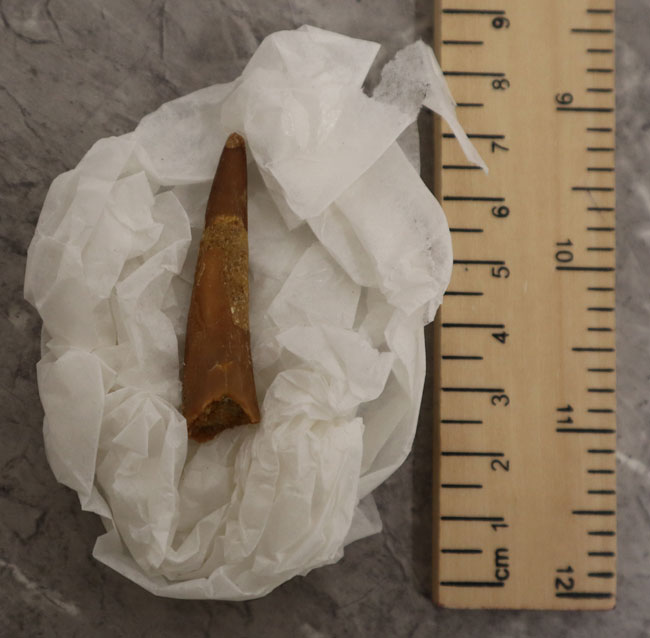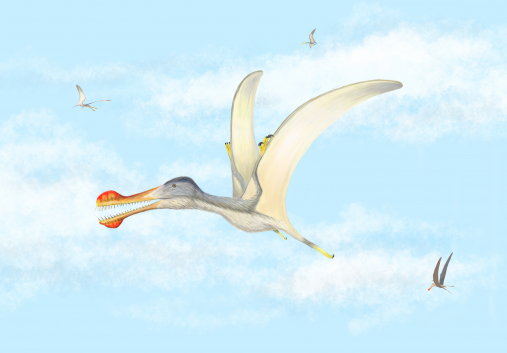Our thanks to Robert, a customer of Everything Dinosaur, who sent into our offices a fossil of a pterosaur tooth from the Kem Kem Formation of Morocco. The large tooth is slightly curved and lacks any serrations (denticles), it is a typical example of a flying reptile tooth from the early Late Cretaceous Kem Kem deposits. Although we are unable to identify the genus, we suspect that the tooth comes from an ornithocheirid pterosaur.

The pterosaur tooth fossil sent into Everything Dinosaur by one of our Scottish customers. The tooth, which measures approximately 5 cm long most likely comes from an ornithocheirid pterosaur. Picture credit: Everything Dinosaur.
Picture credit: Everything Dinosaur
Fossil Pterosaur Tooth
When taking a picture of a fossil, or indeed, taking a photograph of an object that you think might be a fossil but need help with identification, it is a good idea to provide some scale in the picture. A coin could be placed next to the item to provide a scale reference. At Everything Dinosaur, we tend to use one of our brightly coloured geological rulers but as we did not have one of these in the office, an ordinary ruler was pressed into service. Viewers of the photograph can instantly get an idea of the size of the object. In this case, the fossil tooth measures approximately 5 cm in length.

The pterosaur Anhanguera soars over the skies of North Africa with Coloborhynchus and Ornithocheirus to keep it company. Picture credit: Megan Jacobs (University of Bath).
Picture credit: Megan Jacobs (University of Bath)
For models and replicas of pterosaurs and other prehistoric animals: Safari Ltd. Wild Safari Prehistoric World Models.
Kem Kem Beds
The Kem Kem Formation, actually consists of two Formations, lower Gara Sbaa Formation and the geologically younger Douira Formation. Technically, the Kem Kem Formation should be referred to as the Kem Kem Group, these strata are exposed across a large part of the Algerian/Moroccan border and are famous for dinosaur remains.
Fossils associated with the Kem Kem Beds are often highly fragmentary and although several pterosaur genera have been described from fossil discoveries associated with these deposits, their remains are relatively rare and often difficult to interpret.
To read an article describing a new species of toothless pterosaur from Morocco: A Fourth New Moroccan pterosaur – Afrotapejara.
Our thanks to Robert for sending into Everything Dinosaur, this excellent example of a pterosaur tooth.
Visit the Everything Dinosaur website: Everything Dinosaur.






Leave A Comment